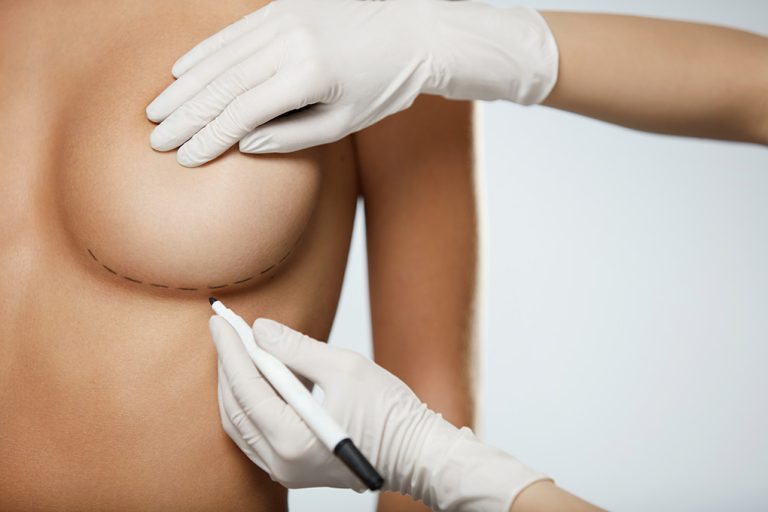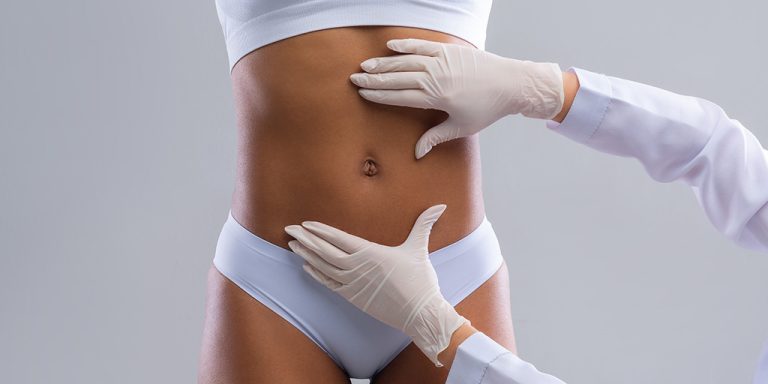A Guide to Post-Liposuction Expectations
Posted on: February 13, 2024
Liposuction stands as a beacon for those aiming to refine their body contours, offering a solution where diet and exercise fall short. This surgical procedure meticulously removes fat from various parts of the body, sculpting it into a more desirable shape. It’s crucial for individuals considering this option to understand its scope, benefits, and limitations thoroughly. As we delve into the intricacies of liposuction, readers will gain insight into how it works, who is an ideal candidate, and what outcomes can be realistically anticipated.
Understanding Liposuction Treatment Areas
Common Areas
Liposuction is often thought of for the abdomen, thighs, and arms. These areas are popular because they tend to hold stubborn fat. People choose liposuction when diet and exercise don’t work.
These common areas have different challenges. The abdomen may need more care due to its size. Thighs can show great results quickly. Arms might need a delicate approach due to their visibility.
Suitability Variation
Not everyone is suited for liposuction in every area. It depends on body type and where the fat lies.
Some people might find that their abdomen isn’t right for liposuction, but their thighs are perfect. Others might see better options in arm treatment if they carry more weight there.
- Body type matters.
- Fat distribution guides decisions.
Response Differences
Certain areas respond better to liposuction than others do. This means some parts of the body will show quicker, more noticeable improvements.
For example:
- The abdomen often shows dramatic changes.
- Thighs can reshape significantly, enhancing overall silhouette.
- Arms may offer subtle yet meaningful transformations, especially in how clothes fit.
Understanding these differences helps set realistic expectations about what liposuction can achieve in each specific area or treatment area.
Preparation for Liposuction Surgery
Medication Management
Before undergoing liposuction, it’s crucial to avoid blood-thinning medications and supplements. These substances can increase bleeding during the procedure. Your surgeon will provide a list of what to avoid.
Blood thinners and certain supplements can lead to complications. Make sure to follow your doctor’s advice closely.
Lab Tests
Getting lab tests is another important step in preparing for lipo surgery. These tests check your health status and ensure you’re fit for the procedure.
Your surgeon will tell you which tests are needed. They might include blood work or other specific exams depending on your medical history.
Post-Surgery Plans
Arranging for someone to drive you home after surgery is essential. You won’t be able to drive yourself due to the effects of anesthesia and post-surgery fatigue.
It’s also wise to have someone stay with you for at least the first night. This ensures that help is available if needed.
Liposuction Procedure and Types
Tumescent Technique
Tumescent liposuction is a common type. It involves injecting a solution into the fatty areas. This solution makes the fat easier to remove.
The fluid also contains an anesthetic, reducing pain. This technique minimizes blood loss during the procedure.
Ultrasound-Assisted
Ultrasound-assisted liposuction targets dense or fibrous fat areas. It uses ultrasound vibrations to liquefy fat cells before removal.
This method is effective for treating areas like the back or male breast tissue. The process allows for more precise fat removal in challenging areas.
Laser-Assisted
Laser-assisted techniques are newer in the field of liposuction procedures. They use laser energy to dissolve fat cells.
Besides removing fat, these techniques promote skin tightening. This dual benefit makes it popular among patients seeking smoother results.
Recovery Process Timeline After Liposuction
Initial Phase
The recovery time after liposuction varies. Most patients notice initial swelling and bruising. These symptoms typically subside within a few weeks. It’s important to follow the surgeon’s advice during this period.
Patients should rest as much as possible in the first few days. Wearing compression garments helps reduce swelling faster. Activities should be limited to light walking to encourage circulation.
Returning to Work
Returning to work depends on the nature of your job and how you feel. Many patients go back within a few days to two weeks. Jobs that require physical labor may need more time off.
It is crucial not to rush this process. Listening to your body prevents complications and promotes healing. Adjustments might be necessary based on individual recovery progress.
Seeing Results
Full results from liposuction are not immediate. The body goes through a healing process that can take several months.
- Patience is key.
- Following post-operative instructions aids in achieving optimal results.
As the body heals, contours become more defined, revealing the full effects of liposuction.
Managing Pain and Discomfort Post-Surgery
Pain Medication
After liposuction, patients may experience moderate pain. Doctors often prescribe pain medication for this. It’s crucial to follow the prescription carefully.
Pain medicines help manage discomfort during the initial healing phase. They should be taken as directed by your healthcare provider. This ensures effective pain control without overuse.
Compression Garments
Wearing compression garments is another key step in managing post-surgery discomfort. These garments support the healing process by reducing swelling.
They also lessen discomfort around the incision sites. Patients are advised to wear them as instructed for optimal benefits.
Gentle Movements
Incorporating gentle movements after surgery can aid recovery significantly. Light exercises improve circulation and reduce stiffness in treated areas.
Activities like walking are recommended but should be done cautiously to avoid complications.
Tips for Smoother Liposuction Recovery
Stay Hydrated
Drinking plenty of water is crucial after liposuction. It helps your body heal faster. Aim to drink at least eight glasses a day.
Eating healthy is also key. Focus on fruits, vegetables, and lean proteins. These foods aid in recovery.
Avoid Activity
Resting is important after surgery. Do not rush into exercising or heavy lifting.
Your surgeon will tell you when it’s safe to resume activities. Follow their advice closely to avoid complications.
Post-Op Care
Following your surgeon’s instructions is essential for healing. This includes taking prescribed medication on time.
Attend all follow-up appointments without fail. They help track your recovery progress.
Maintaining Results and Managing Expectations
Stable Weight
Maintaining a stable weight is crucial after liposuction. Gaining weight can alter the outcomes significantly. It’s essential to avoid fluctuations in your body size.
To keep your weight stable, focus on a balanced diet and regular exercise. These steps will help preserve the results of your surgery. Remember, liposuction removes fat cells from specific areas, but it doesn’t prevent new fat from accumulating elsewhere.
Patience Required
Results from liposuction are not immediate. Recovery takes time, and patience is necessary to see the final results. Swelling must go down first.
During this period, follow post-surgery instructions carefully. Resting adequately and avoiding strenuous activities are key for a smooth recovery process.

Lifestyle Changes
Regular exercise and a healthy diet are not just short-term goals; they should become part of your lifestyle to maintain liposuction results long-term.
- Exercise regularly
- Eat a balanced diet
- Avoid excessive drinking
These changes will not only help in maintaining the outcomes but also improve overall health.
Choosing a Plastic Surgeon for Liposuction
Board Certification
Look for board certification in plastic surgery. This shows the doctor has passed rigorous exams. It proves they know how to handle fat, skin, and cells safely.
Board-certified surgeons have training beyond medical school. They understand both the art and science of liposuction. Trusting someone with this level of expertise is crucial.
Before-and-After Photos
Review before-and-after photos of past patients. These images reveal a lot about the surgeon’s skill. Look for cases similar to yours.
Photos show results from removing fat cells through a tube, called liposuction. Seeing real outcomes helps you set realistic expectations for your own procedure.
Communication and Comfort
Ensure clear communication with your surgeon. A good doctor listens to your concerns about fat removal and weight goals. They explain everything clearly.
Comfort with your surgeon’s approach is essential too. You should feel at ease asking questions during the person consultation. The right surgeon will make sure you understand every step of the process.
Closing Thoughts
Liposuction stands as a significant advancement in cosmetic surgery, offering individuals the opportunity to reshape their bodies and boost confidence. From understanding treatment areas, preparing for surgery, navigating through the procedure types, to managing recovery and maintaining results, the journey requires comprehensive knowledge and careful consideration. The choice of a skilled plastic surgeon is paramount, ensuring safety and achieving desired outcomes. Moreover, embracing a healthy lifestyle post-surgery plays a crucial role in sustaining results, underlining the importance of personal commitment alongside medical expertise.
For those considering liposuction, it’s vital to engage with reputable professionals who prioritize patient well-being and adhere to high standards of practice. Consulting with a board-certified plastic surgeon can provide clarity, tailor expectations, and set the foundation for a successful transformation. Take the first step towards your aesthetic goals by scheduling a consultation today.
Frequently Asked Questions
What areas can be treated with liposuction?
Liposuction can effectively remove fat from the abdomen, thighs, buttocks, arms, neck, and back. Each area requires specific techniques for optimal results.
How should I prepare for liposuction surgery?
Preparation involves stopping certain medications, maintaining a stable weight, and not smoking to ensure better healing and outcomes.
What are the different types of liposuction procedures?
There are several types including tumescent liposuction, ultrasound-assisted liposuction (UAL), and laser-assisted lipolysis (LAL), each using distinct methods to remove fat.
What is the recovery timeline after undergoing liposuction?
Recovery typically spans a few days to weeks. Most patients return to work within a few days but should avoid strenuous activities for up to four weeks.
How can I manage pain post-liposuction surgery?
Pain management usually involves prescribed or over-the-counter pain relievers. Following your surgeon’s advice on rest and activity level also aids in managing discomfort.
Are there tips for smoother recovery after liposuction?
Ensuring adequate rest, wearing compression garments as advised, staying hydrated, and following all post-operative care instructions facilitate smoother recovery.
How do I maintain my results post-liposuction?
Maintaining results involves adopting a healthy lifestyle with balanced nutrition and regular exercise to prevent new fat deposits from forming.





